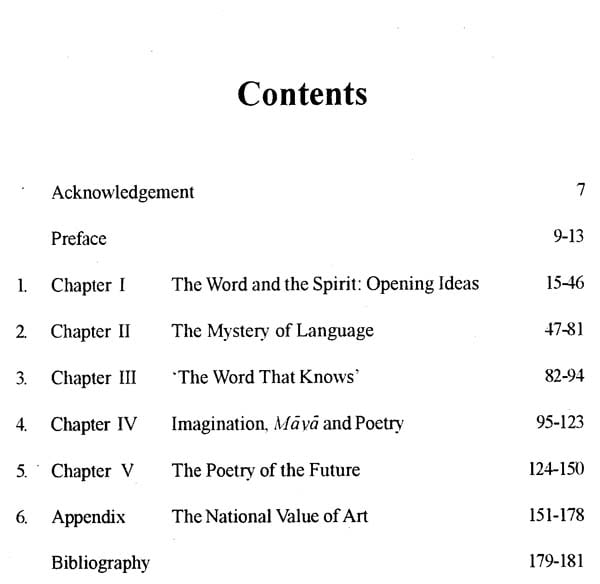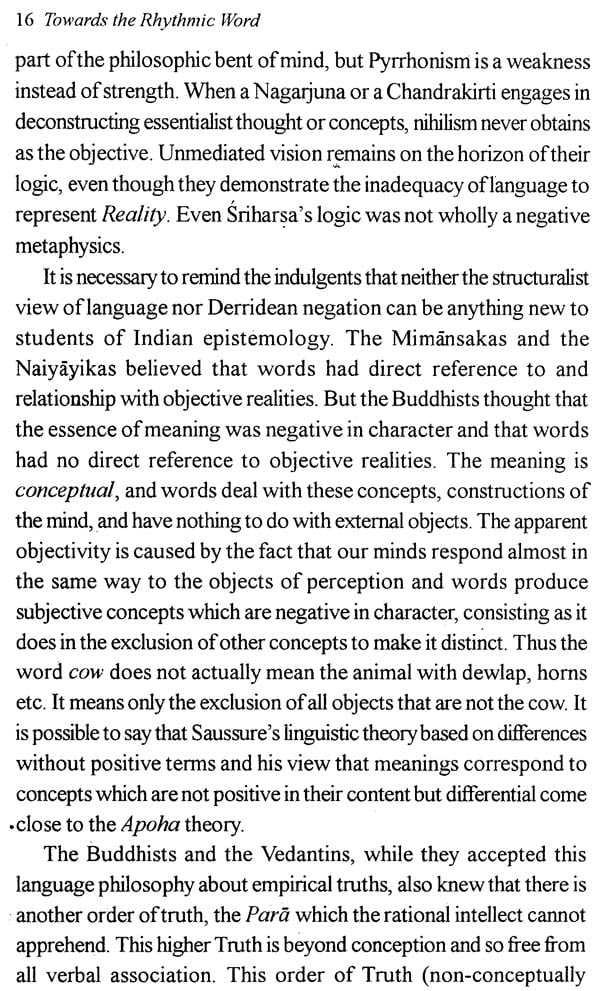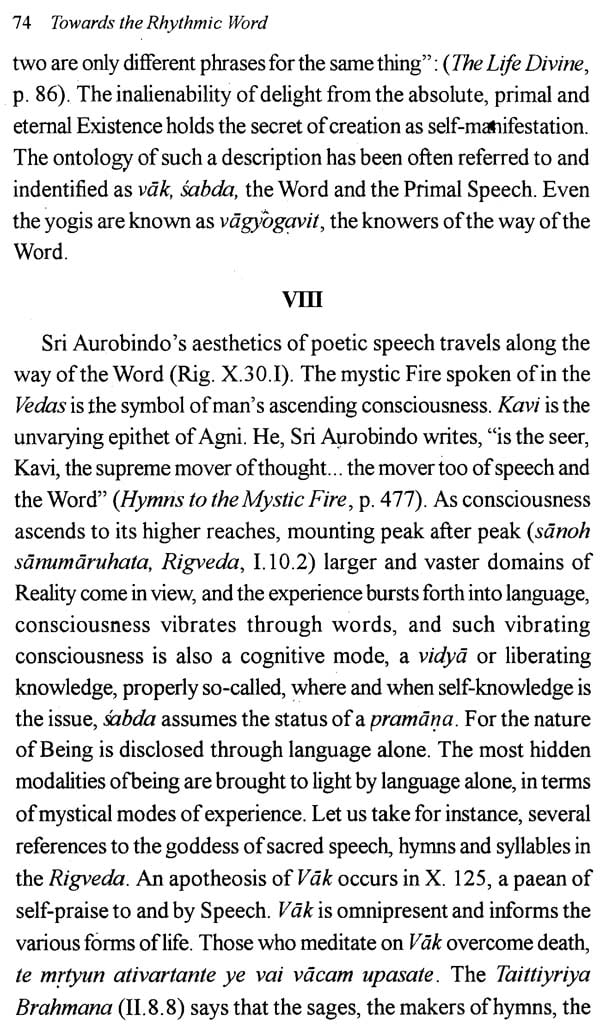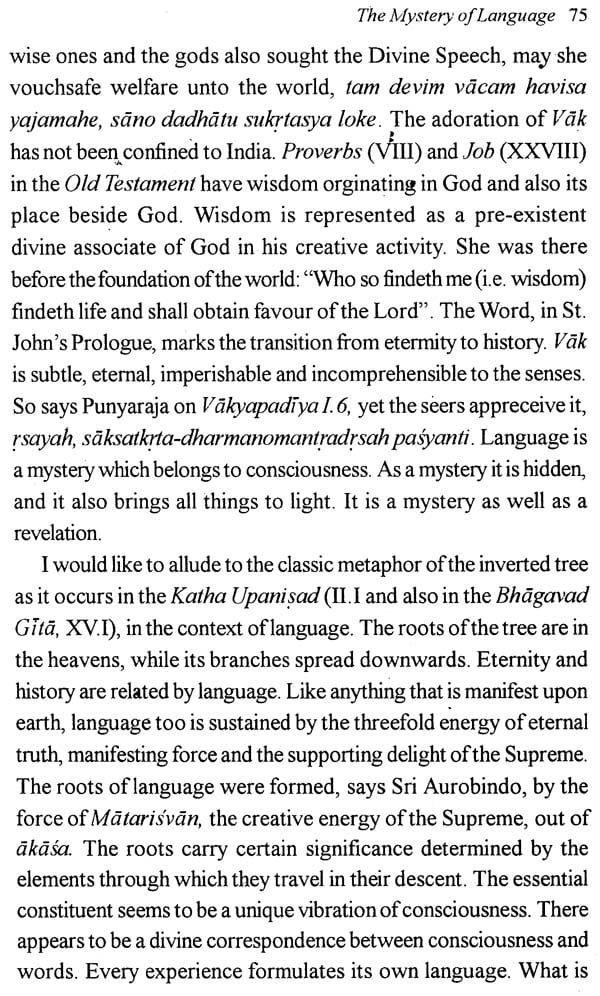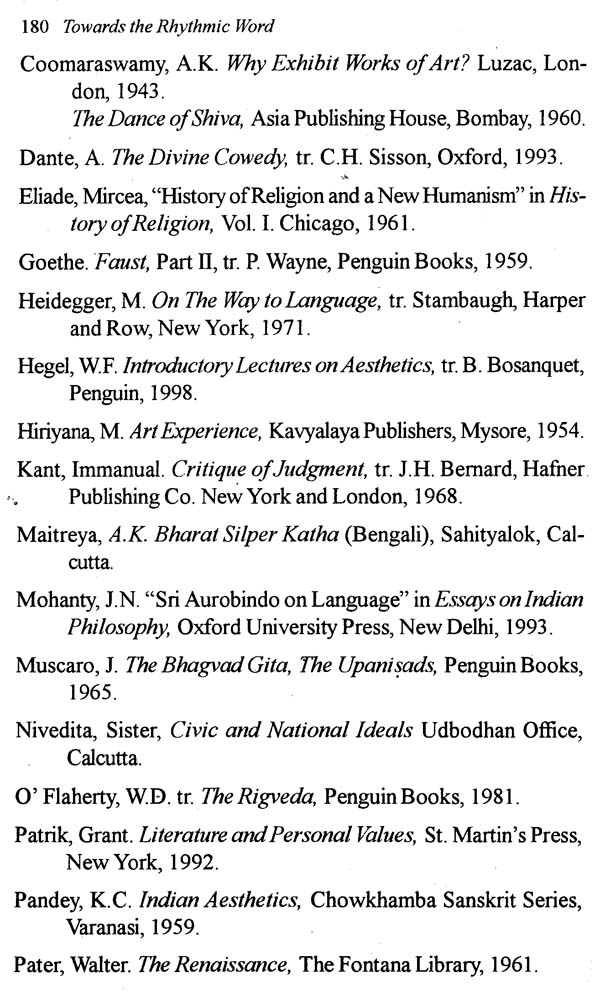
Towards the Rhythmic Word- Studies in Sri Aurobindo's Theory of Poetry
Book Specification
| Item Code: | NAY537 |
| Author: | Pabitrakumar Roy |
| Publisher: | Sri Aurobindo Bhavan, Kolkata |
| Language: | English |
| Edition: | 2011 |
| Pages: | 182 |
| Cover: | HARDCOVER |
| Other Details | 8.50 X 5.50 inch |
| Weight | 290 gm |
Book Description
o look closely into Sri Aurobindo's ideas matt and poetry, the author takes up primarily a detailed study of The Foundations of Indian Culture, The Future poetry, The National Value of Art, and The Human Cycle only to find the his ideas on art and aesthetics were firmly based on his basic ontological and evolutionary thesis concerning the self-manifestation of the spins through mind ascending upwards. Art and poetry are human phenomena, and pass through cycles. In this study, Roy has endeavored to understand Sri Aurobindo’s ideas on art, language and poetry as characterised by the cycles of their appearance, and rooted in the metaphysics formulated in The Life Divine.
Sri Aurobindo views that art in India has been an affair of the spirit and this he shares with other masters of the east and the west.
The author's main interest has been with Sri Aurobindo's Theory of Poetry, and since poetry has to do with language, his view language appeared of significance. Roy has also taken into account the view of the imagination as the formative power of art in general. The author is particularly drawn to Sri Aurobindo's view that mind is not the creator, and therefore, his critique of mind and its operations should attract due attention. Be it poetry or the plastic arts, intuition is the king in the matter of creativity. As the unenlightened perception goes, Sri Aurobindo erects a dichotomous tension between reason and intention. The case is not that simple. Reason has its own domain and intuition another. The point is that reason is the help no doubt, but if and when it is uninformed by intuitive seeing, by transcending its set borders, there would be much to life and its aspiration and fulfillment that should remain unmastered. Reason can be discursive as well as intuitive. In the process of ascension, it is mind itself that goes on unfolding its higher, richer and greater potentials, correcting and exceeding the limits that beset its so-called objective attitude. In an evolutionary philosophy, reason cannot be the final achievement; it exceeds and transforms itself into intuition.
The ascent is always integrating, i.e., uplifting and transforming of the lower into the higher. The higher is always wider, larger and more expansive. It is an adventure of consciousness, ever widening in amplitude. An adventure of consciousness is what Sri Aurobindo calls us to, both in his metaphysics, and in art and aesthetics as well. This is what will fulfill our human promise and aspiration. Art and poetry in particular, put us on the ontological ladder, and that we are never to cease in exploration is the message that these studies have intended to convey.
Although Roy's interests are varied, the specific areas of his inquiry and research are Moral Psychology, Ethical Theory and Recent Indian Thought. His publications, numbering over a dozen books and monographs and an equal number of selected papers, cover a variety of subjects such as Mahayana Ethics. He served as Senior Fellow at the Indian Council of Philosophical Research, New Delhi, and subsequently as Fellow, Indian Institute of Advanced Study, Simla, from 2004-07. His projects at these two places were respectively 'Aesthetic Philosophy of Sri Aurobindo' and 'Mapping the Bodhicaryavatara: Interpretive Essays on Mahayana Ethics', the latter is shortly to be published by IIAS, Shimla along with Three Lectures on Loving Kindness. He has served as Visiting Professor to a number of Indian universities including Jadavpur University, North-Eastern Hill University, Poona University and Utkal University. He has travelled widely both within and outside India. Roy is presently Project Coordinator at the Central Institute of Higher Tibetan Studies, Sarnath, Varanasi, the project being 'Re-editing and Publication of Mahayana Sanskrit Texts'. He has been Guru Nanak Fellow at Punjab University, Patiala
Appreciation of a thinker depends on a variety of reasons. One will have to approach him with an open mind, bracketing prejudices and predispositions and habitual pattern of reactions. No demand has to be made of the author for what one may like to have. Philosophical writings need not be necessarily argumentative; it could be elaboration of the author's primal insights. Style also matters. The style that is suited to one kind or genre of thinking might not be a fit vehicle for another. Sri Aurobindo's prose is Phenomenal. Its winding sentences go on disclosing, phrase by phrase, clause after clause, newer dimensions, subtle nuances, new shades of meaning at every turn. A closer study alone will yield the secrets, revealing its prismatic effect.
My philosophical inquiries lay mostly with David Hume's moral epistemology and Kant's third Critique. Only as a Fellow of Indian Institute of Advanced Study, Shimla, I had to do a piece on Sri Aurobindo's aesthetic philosophy for my book Art, Beauty and Man. But that was not enough.
As an ICPR Senior Fellow, I had time to look more closely into Sri Aurobindo's ideas on art and poetry. I proceeded with The Foundations of Indian Culture, The Future Poetry, The National Value of Art, and The Human Cycle to find his ideas on art and aesthetics to be traced back to his basic ontological and evolutionary thesis concerning the self-manifestation of the spirit through mind ascending upwards. Art and poetry are human phenomena, and pass through cycles. I have endeavored to understand Sri Aurobindo's ideas on art, language and poetry as characterised by the cycles of their appearance, and rooted in the metaphysics formulated in The Life Divine.
Sri Aurobindo views the art of India as an affair of the spirit, this he shares with such critics as Sister Nivedita and Ananda Coomaraswamy. Nivedita writings on Indian art have gone into oblivion, and only Coomaraswamy works are cited and discussed by today's critics as Benjamin Rowland and others. It is quite amazing that hardly ever one comes across Sri Aurobindo's assessment of the aesthetic achievements of Ajanta murals or Chola bronzes. His encountering the western rationalist criticism of Indian art has not, even now, lost its teeth.
Book's Contents and Sample Pages
